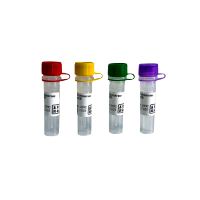Redesigning the Specificity of ProteinDNA Interactions with Rosetta
互联网
501
Building protein tools that can selectively bind or cleave specific DNA sequences requires efficient technologies for modifying protein–DNA interactions. Computational design is one method for accomplishing this goal. In this chapter, we present the current state of protein–DNA interface design with the Rosetta macromolecular modeling program. The LAGLIDADG endonuclease family of DNA-cleaving enzymes, under study as potential gene therapy reagents, has been the main testing ground for these in silico protocols. At this time, the computational methods are most useful for designing endonuclease variants that can accommodate small numbers of target site substitutions. Attempts to engineer for more extensive interface changes will likely benefit from an approach that uses the computational design results in conjunction with a high-throughput directed evolution or screening procedure. The family of enzymes presents an engineering challenge because their interfaces are highly integrated and there is significant coordination between the binding and catalysis events. Future developments in the computational algorithms depend on experimental feedback to improve understanding and modeling of these complex enzymatic features. This chapter presents both the basic method of design that has been successfully used to modulate specificity and more advanced procedures that incorporate DNA flexibility and other properties that are likely necessary for reliable modeling of more extensive target site changes.









